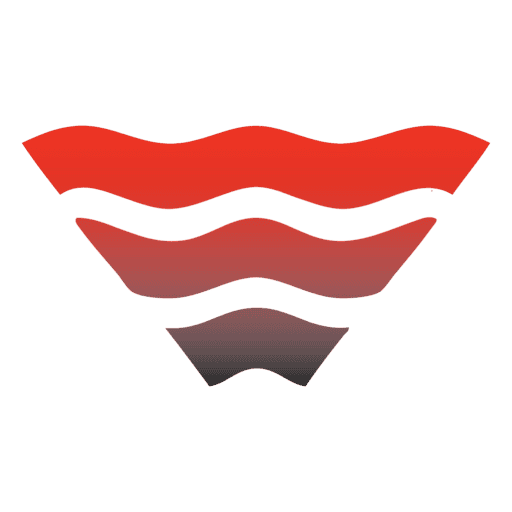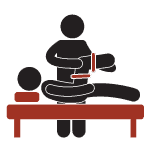Custom Bracing
Contact UsHere at South Simcoe Physiotherapy clinics in Alliston and Tottenham, we offer a custom orthopaedic bracing service. We offer a wide range of braces for individuals suffering from tennis elbow, back pain to knee osteoarthritis. With each brace, the physiotherapist will take specific measurements to determine which brace will suit you best.
What is custom bracing?
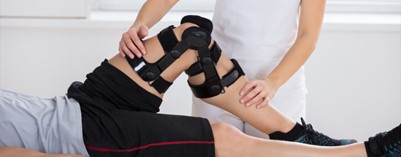
Orthopaedic custom bracing refers to braces or supports that are specifically designed and tailored to meet an individual’s needs. Typically, the brace is used to provide pain relief, support, stability, and added protection to a weak or injured joint or muscle. Custom bracing is beneficial for a wide range of body parts and conditions. Depending on your condition the brace will be custom-made based on measurements and specifications taken by your physiotherapist.
What are some conditions that will benefit from custom bracing?
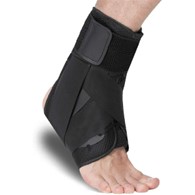
- Sports Injuries: custom bracing can help both recreational and high-level athletes recover from injuries and return to sports quicker and safer
- Common sports injuries that bracing helps with:
- Ligament injuries (i.e. knee ACL, ankle sprains)
- Tendonitis
- Fractures
- Joint instabilities
- Common sports injuries that bracing helps with:
- Arthritis: arthritis is a quite common condition, which can have significant impacts on an individual’s life. Custom bracing can help to reduce pain, swelling, and improve stability
- Here at South Simcoe Physiotherapy we have specific custom knee braces for knee osteoarthritis
- Post-surgical: after an orthopaedic surgery, custom braces are often used to immobilize a joint, promote proper healing and prevent excessive movement that could hinder recovery. This is commonly used after joint replacements, ligament repairs, and fractures.
- Back pain: custom lumbar braces can help to provide support and stabilization to individuals suffering from back pain.
- Common back pain injuries that bracing helps with:
- Herniated discs
- Spinal stenosis
- Degenerative disc disease
- Lumbar muscle strains
- Foot and ankle disorders: custom braces for foot and ankles can help to address conditions such as plantar fasciitis, ankle instability and other foot deformities
- Common back pain injuries that bracing helps with:
Traumatic Injuries: a custom brace may benefit an individual who has suffered a traumatic injury such as fractures, dislocations and other soft tissue injuries
- Other:
- Tennis elbow
- Carpal tunnel syndrome
- Wrist sprains
- De Quervain’s Tenosynovitis
- Patellar dislocations and dysfunctions
- Chronic swelling
- Sacroiliac joint pain
What are the benefits of custom bracing?
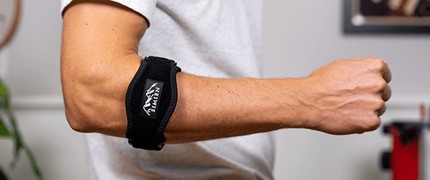
Custom bracing has many advantages, but to sum it up:
- Customization
Custom braces are tailored to the individual to provide a precise fit. This includes taking in to account the uniques of the individuals body part, as well as ensuring the brace fits optimally an comfortably.
2. Targeted support
A custom brace will be designed to provide targeted support and stabilization to a specific area of the body that needs it. This will be important for injuries or conditions that require a specific pressure distribution.
3. Stabilization
For certain conditions, stabilization will be the main focus. Therefore, having a brace that is custom for you will allow the proper amount of stability for that body part.
4. Improved proprioception
Proprioception refers to our ability to recognize our movements in space. A custom brace will help provide proprioceptive feedback to that body part, and help make us aware of specific movements we are making.
5. Improved Compliance
A custom brace is fitted to you to maximize comfort as well as match your lifestyle. With that being said, we are much more inclined to wear something that fits comfortably. And if we are wearing the brace more, we will be enhancing treatment outcomes and speeding up recovery.
6. Long-term durability
Custom braces are typically made from high quality materials that are durable and made to last longer. Depending on your lifestyle and use for the brace, your physiotherapist will recommend a specific brace to match.
7. Prevent further injury
By providing targeted support, stability, proprioception and protection, a custom brace can help to prevent further injury to a damaged joint, muscle or other soft tissue structures. They can also help to optimize biomechanics, reducing the risk of overuse injuries.
What to expect when getting a custom brace?
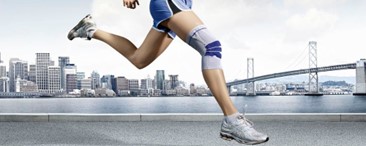
It is important for the assessment and measurements for a custom brace to be made by a trained healthcare professional. Here at South Simcoe Physiotherapy, our physiotherapists are trained for brace fitting. The typical process for getting a custom brace involves.
2. Measurements: depending on the specific brace, the physiotherapist will take specific measurements to ensure a proper fit.
3. Design/selection: depending on your condition, the physiotherapist may send off your measurements to a manufacturer or fit you in a brace we have in stock.
4. Fitting: if the brace is being manufactured, once it is received a brace fitting appointment will be scheduled. The physiotherapist will ensure the brace fits appropriately, and you are able to perform the functions you need to (i.e. walk, stairs, bend forward)
What to do next?
If you are suffering from an injury and think a brace may be beneficial contact our clinic today for more information on braces and custom knee braces.
MANUAL AND MANIPULATIVE THERAPY
Our therapists use a variety of hands on techniques to both accurately assess and efficiently treat patients. Specialized training through the Orthopaedic Division of the Canadian Physiotherapy Association (orthodiv.org) allows for accurate diagnosis and faster recovery. Fellows of the Canadian Academy of Manipulative Physiotherapists (FCAMPT) have taken extensive post-graduate training and have received international recognition in hands on techniques.
manippt.org
CONCUSSION MANAGEMENT
At South Simcoe Physiotherapy we have training in the Shift Concussion Management Program (shiftconcussion.ca). Using this program as a basis, we thoroughly assess the individual systems often effected in a concussion using a variety of tests, as well as cognitive tools such as imPact. Once an accurate assessment has been performed, we develop a multi-faceted rehabilitation strategy to return the individual to optimal function.
PELVIC HEALTH
massage therapy
Massage therapy is a form of hands in treatment that affects the body’s soft tissues such as the muscles, connective tissue, ligaments, tendons and joints. Massage therapy can have therapeutic effects on the muscular, circulatory, and nervous systems. For more information on Registered massage therapy please visit: www.rmtao.com
acupuncture
Acupuncture is rooted in Traditional Chinese Medicine and uses tiny needles which are inserted into various points in the body. Acupuncture stimulates the body’s natural healing mechanisms and is effective in treating a variety of conditions including headaches, back pain, neck pain, various overuse and sports injuries. Our therapists have training in acupuncture through Acupuncture Canada ( https://www.acupuncturecanada.org)
RUNNING ASSESSMENT / GAIT ANALYSIS
Gait analysis and Running Assessments can be useful in determining biomechanical irregularities during either walking or running that are either causing or are caused by a certain condition or injury. Gait analysis can also help to identify inefficiencies that may be reducing performance in runners and perhaps predisposing or contributing to injury.
We use multiple tools to analyze a person’s gait. First, we use our physiotherapy backgrounds and knowledge of biomechanics. By observing someone walking/running/using the treadmill (and perhaps recording them) we can often identify these major faults. A biomechanical exam can also aid in this process through identifying structural limitations, muscle weakness and tone, and a variety of other potential faults. Finally, using training from courses such as those taught at The Running Clinic https://therunningclinic.com/en, can help to consolidate all of this information while allowing us to make recommendations on items such as footwear, training schedules, and other information relevant to your specific situation.
IMS/IDN
Intramuscular Stimulation and Integrated Dry-Needling. Both IMS and IDN are forms of dry needling where an acupuncture needle is inserted into a taut band in a shortened muscle or near the nerve root in order to cause a reflex relaxation of the muscle, a micro trauma to stimulate natural healing and create an action potential to restore normal nerve conduction. This technique can be extremely useful to treat chronic pain, myofascial pain syndromes, many sports injuries, and overuse injuries. For more information visit: www.istop.org
exercise prescription
Exercise is an essential part of all rehabilitation programs. In order to restore normal muscle length and strength, correct biomechanical faults and return to function, exercises need to be specifically tailored to suit individual needs.
custom bracing
shockwave therapy
Shockwave is a non-invasive way to treat many muscular, tendinous, ligamentous, and bone problems that lead to pain and loss of function. Briefly stated it uses strong energy pulses to stimulate increased blood flow and metabolism allowing regeneration of damaged tissue. A phenomenon called “micro-cavitation” occurs where “bubbles’ expand and burst creating a force that penetrates damaged tissue and stimulates cell reparation. Shockwave is especially effective in treating issues that have been unresponsive to other conservative methods.
VIDEO AND TELEPHONE CONSULTATIONS
At a time when social distancing is necessary, we are pleased to be able to offer our exceptional care in an alternative method. Video consultations (think FaceTime or Skype) can be an effective method to assess and treat musculoskeletal and other physiotherapy appropriate impairments. A thorough analysis can be conducted by performing a detailed subjective, observing individual movements, performing simple tasks and special tests, and evaluating the environmental factors which are aggravating the condition. From there, our therapist can devise an appropriate treatment plan including self management strategies, modifications, and exercises appropriate to address your condition. The therapist is easily able to demonstrate the exercises and observe you performing them, and can even send you video demonstrations of the exercises. For those that are unable to access reliable internet, or do not regularly use a computer, telephone consults are also an option.
No doctor's referral is necessary and these sessions are covered by most insurers
NATUROPATHY
Frequently Asked Questions
What is physiotherapy?
Simply stated, physiotherapy is the treatment of deficits and disease without the use of medications. Physiotherapy is useful for the majority of injuries and ailments one might suffer. The goal of our physiotherapists is to reduce your symptoms and allow you to return to function in a timely manner. If you are unsure if your condition is appropriate for physiotherapy, please feel free to contact us.
How do I pay for your services?
Does OHIP cover physiotherapy?
Do I need a doctor’s referral to come and see you?
What do I need to wear for my assessment?
Will my private insurance cover the cost of this treatment?
What if my injuries are as a result of a motor vehicle accident or workplace injury?
- Date of accident
- Claim number
- Adjuster’s name and contact information
- Private health insurance information (if applicable)
- Area of injury
We are able to direct bill your motor vehicle insurance, but please note that all of your private health insurance must be used prior to accessing your motor vehicle insurance. These rules are mandated by the Financial Services Commission of Ontario and not our clinic.
Workplace injury (WSIB): we often treat people as a result of a workplace injury, however, we do not bill WSIB directly. If your injury is part of a WSIB claim, you are expected to pay just as other clients and then submit your invoices to WSIB.
